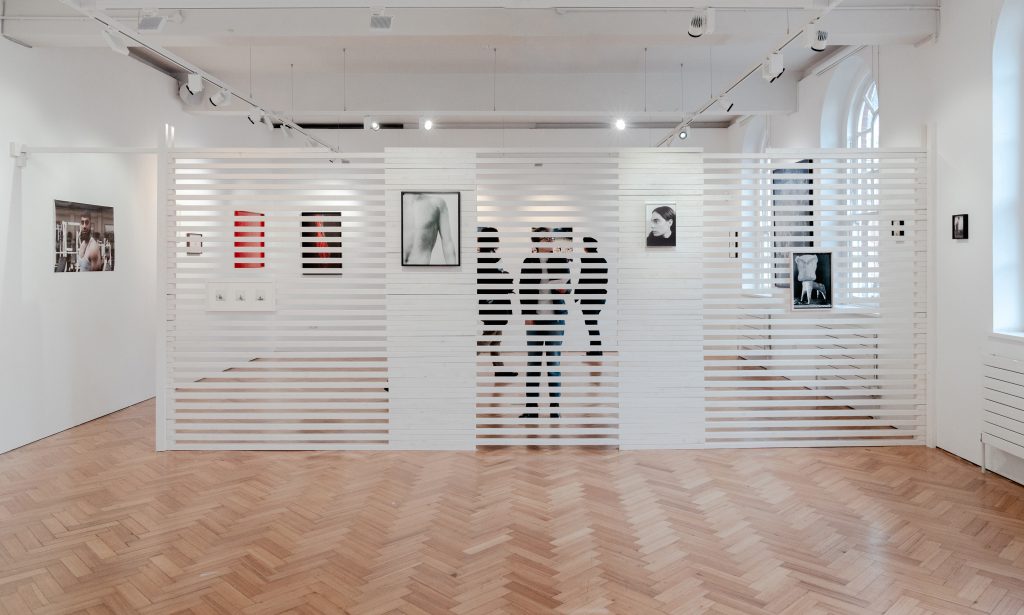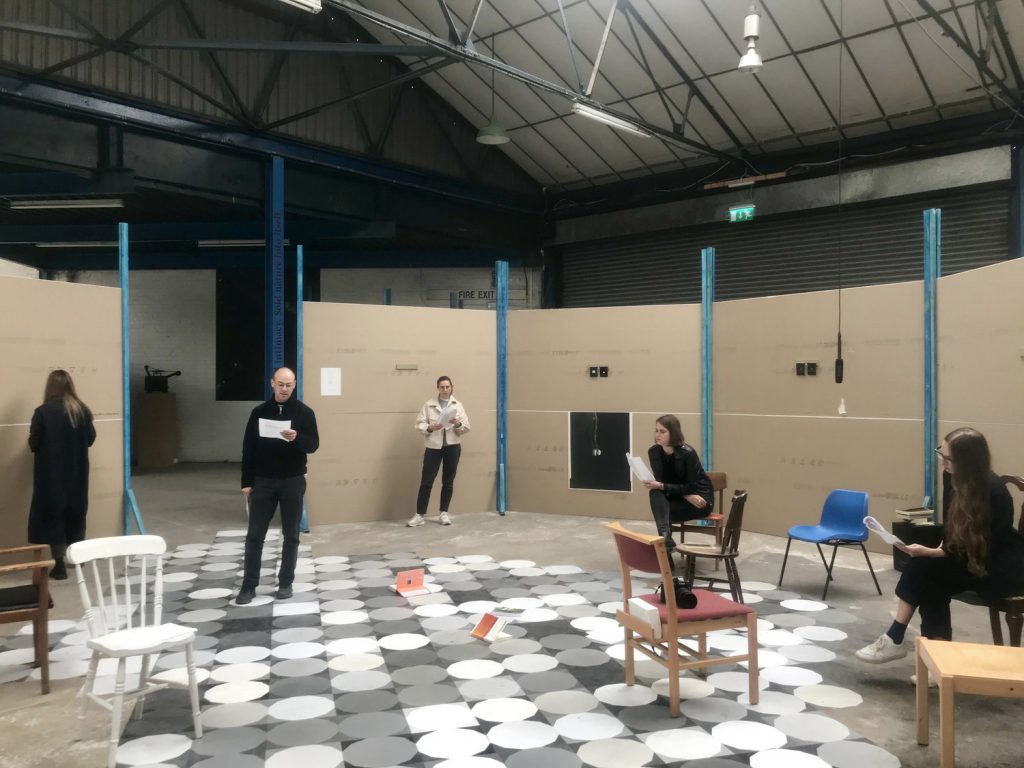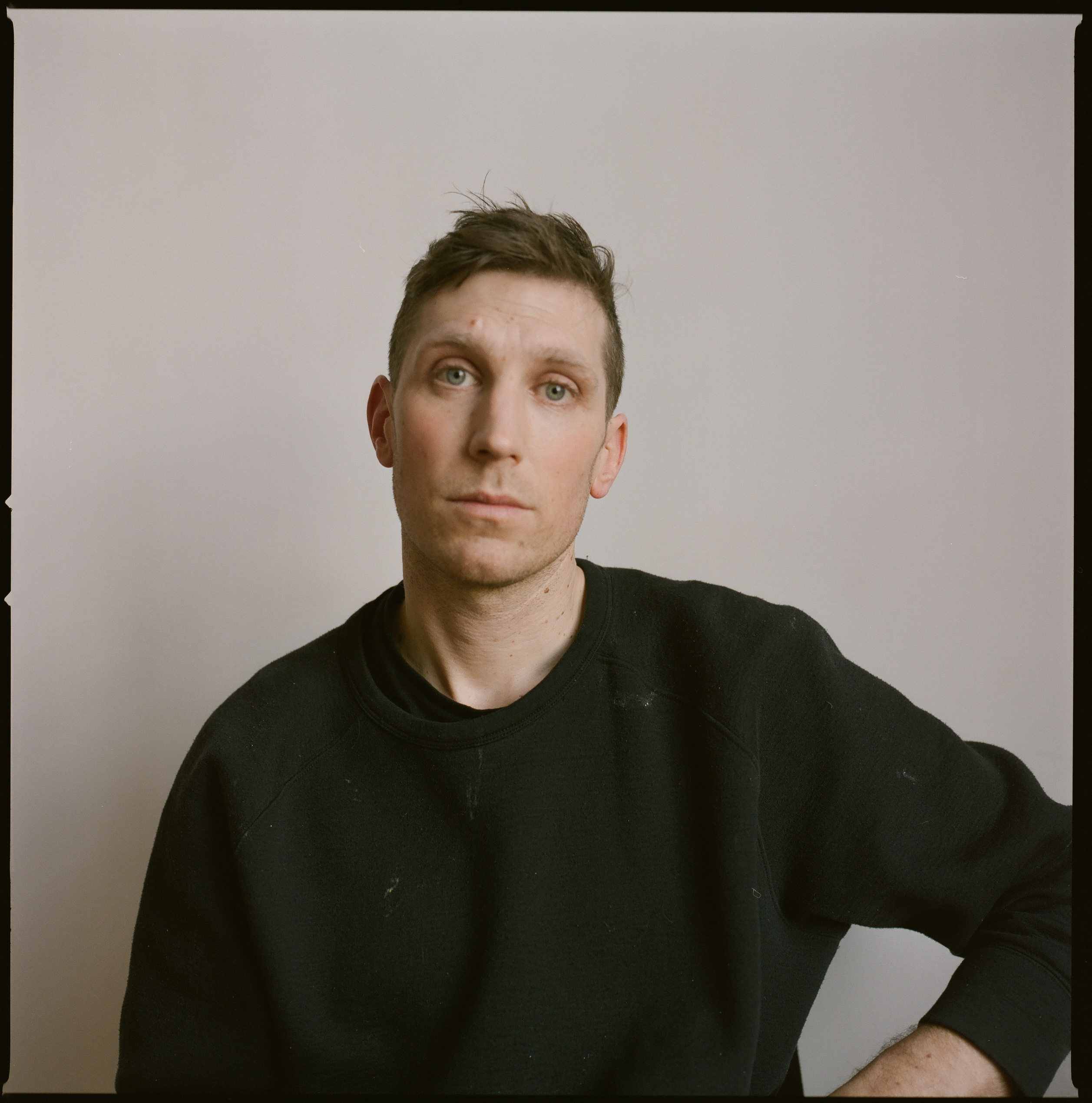Tom Lovelace
Metronom: To begin with, you’d been establishing your own artistic practice for a while before embarking on curatorial projects and teaching activities. When did you become interested in curating and teaching and in what ways do these three practices influence each other?
Tom Lovelace: I studied art history, curating and museology at Goldsmiths University, after completing a BA in Photography. This was in 2003, so I knew then that my interest and intentions within visual culture were greater than a focus purely on my practice of making. I studied under Jean-Paul Martinon, who was brilliant and inspiring. That period of study and research first began to manifest into outputs when I started to stage small exhibitions in my flat in East London, ten years ago. They were low-fi and often hardly anyone came, but it didn’t matter. The aim then was not to tap into large visitor numbers, it was more about testing ideas. Some worked, some didn’t. Which is all important. Fall, but fall forward. In relation to teaching, this in a way came out of the blue in 2015. At the time I was working in various museum roles. Some were administrative and repetitive, others were more creative and stimulating. I was contracted to work weekends and it slowly ground me and my family down. Without a plan in mind, I handed my notice in and on the same day contacted a few Universities about contributing in some way. And for me, a genuinely wonderful journey started there. Initially it was sporadic workshops and lectures, which slowly developed into more regular teaching. And now pedagogy plays a really important part of my life and takes up a lot of my time. I teach as a tutor on two different courses at the RCA, along with different roles at London South Bank University and Glasgow School of Art. I feel really strongly about the state and direction of Higher Education within the arts and the environments that young talented students walk into.
Regarding how these practices influence one another – I think the main influence or convergence would be that I attempt to involve younger, recently graduated artists in my exhibitions as a way of attempting to knock down some of the hierarchical walls that exist within contemporary art. For me, one’s stage, whether that be emerging, established or still studying, has no relevance if the work is good and important. Let’s show it.
M: Teaching is very much a sociable activity whilst curating and making can often be quite solitary, but given your history of collaboration, is the curatorial research process different for you?
TL: The early part of the curatorial process for me continues to remain solitary. Ideas develop through years of looking, thinking and piecing concepts together. I worked on what eventually evolved into At Home She’s a Tourist from 2013 – 2016, in my head. And then the opportunity to realise that project came in 2017 with Peckham 24, with some wonderfully helpful Arts Council funding.
The latter part of the process is a space where I look for collaboration in all forms. I seek to open up the exhibition idea, both as a concept and a physical from through dialogue with trusted peers. The recent display – With Monochrome Eyes at Borough Road Gallery is an example of this. I worked closely with Daniel Alexander (Head of course at LSBU) and Simon Terrill (one of the exhibiting artists), in an informal but important way. Everything was discussed and called into question. To a certain extent, the exhibition programme that I have been developing has had a DIY approach, which I feel requires an initial singular focus, but then this significantly needs other voices to question, expand and push that initial idea into a well-rounded, creative and meaningful outputs.

With Monochrome Eyes, 2020, Installation View, photo Elena Helfrecht
M: Live performance is an integral part of your solo exhibitions and curatorial projects, could you tell us a bit about the kind of experiences you’re trying to relay through these momentary interruptions?
TL: Performing bodies, objects and apparatus have been central to my practice from day one. However, my ideas and approaches to performativity and narrative initially unfolded for the camera. When I was developing my practice, I predominantly worked alone and treated the camera as my audience. I was particularly interested in the ways in which the photograph played a joint role in providing visual access to the subject whilst simultaneously denying physical contact. And then I suppose a natural development, albeit a challenging one, was to allow this focus on the body and performance to break out of the still image. I started to test this a few years ago and momentum is taking it into interesting places for me. I staged live work in Rome, London, Paris and Manchester in 2019. I have been testing the ways in which bodies in real time can respond to and activate the inherent stillness of photography through live encounters within the gallery. I view the work as sitting within the history of collage, with images, props and the body all being single elements. Significantly when these converge, present a form of live collage. And this is where most of my energy currently lies: playing, in a serious way, with the roles of spectator, participant and performer.
Rehearsing the Real was a group show I curated last year in London. And a key element was a live, durational performance by a group of recent RCA graduates: Ramona Güntert, Emma Bäcklund, Erola Arcalís, Joshua Leon and Steff Jamieson. All of these artists have a ‘solo’ practice and would be considered solo artists. I proposed that they work together, in close proximity and in collaboration during the exhibition. I asked them to reconsider the gallery space as a studio, as a kitchen, as a workshop. A place where artwork was developed, performed and made, instead of perhaps simply displayed in its finished state, and their response was simply wonderful and challenging. Visitors could enter the exhibition space at any time and in turn may encounter not only prints, books, furniture but also the artists themselves, discussing ideas and performing texts. A key aim with all of these endeavours is to put pressure on the conventional, passive and often comfortable viewing encounters that dominant art and its display.

Rehearsing the Real, live reading, 2019
M: In your recent curatorial projects, you built what appeared to be quite functional structures which dictated the space – what were the concepts for these structures?
TL:Some gallery architecture can present interesting and inspiring encounters. Some not so much. But what links most gallery spaces is the feature of being malleable and often generic in order to provide a frequent necessary blank canvas for a changing program of exhibitions. And so, the structures that have evolved in most of my exhibitions are simply a way to create a dynamic in response to the architecture, that ties the artwork to the building in interesting ways which chime with the concept of the exhibition. A key feature within With Monochrome Eyes was the design and build of an almost transparent wall, which both divided and connected the resulting two spaces. A key element to this particular exhibition was to display two artworks by each exhibiting artist: one colour and one corresponding black and white work. This fabricated structure created two separate spaces, but significantly, allowed visitors to make visual connections through this slatted wall.
M: Do you feel a sense of urgency to generate these very physical and material experiences in response to the digitalisation of photography and the ways we commonly consume images?
TL:Absolutely. This is very true for me. The digital is ever important. One only has to consider the interesting ways in which digital platforms and spaces have been used in recent weeks in response to the physical and social restrictions as a result of Covid -19. But ultimately, my interests lie in haptic and tactile material encounters. This is what I desire as a person and an artist; a deep-rooted desire for bodily experience, encounters, touch and materiality. I think about this a lot and I believe the proliferation of the digital image and our consumption of this has resulted in a personal retreat to the material world. Tom Medwell, an exciting student at the RCA has recently talked about being and feeling stranded in a digital world. I am sure many creatives can currently relate to this. I view the event of an exhibition as a way of creating destinations and experiences which hopefully present opportunities for meaningful and compelling visceral encounters.
M: How has your research into the collaborative histories of photography informed your approach to teaching?
TL: Photography has a wonderfully rich and exciting history, shaped by technical inventions and conceptual leaps. For me, photography is the most potent medium. But this history really gets interesting when it steps into other creative realms and when other modes of making (sculpture and performance for example) step into photography. Here, unexpected and compelling moments can manifest. The medium has been influenced heavily by other art forms and vice versa and in which case, I believe photography should be researched and understood with these collaborative histories in mind. And this is not often the case. Photography often remains insular as a creative field and an industry. The ties that photography has to a wider art history are too strong to be ignored.
M: Thinking about the state of Higher Education in the UK, as a tutor operating in universities that seems to function more like businesses, do you feel institutional pressure to pursue particular outputs? Occasions have been spoken of where tutors have felt like they’ve needed to produce a publication over something like an exhibition to appease higher-ups.
TL: I haven’t personally encountered pressure of this kind. Only once have I heard a murmur of the powers that be pushing for perhaps more tangible outcomes, rather than a seemingly transient exhibition. There are good examples of alternative routes in this context, where printed matter might compliment a physical display of work. UCLan’s publication NORTH (2015) is a good example and RCA’s 2010 publication Picking Up, Bouncing Back which presented student work along with texts by Alexander Düttmann, Jean-Luc Nancy and Olivier Richon. Further to this, I think universities and courses should be working towards a collection of outputs, to alleviate the pressure from a one-week graduation show. The current Covid-19 scenario in a way is forcing this issue. There is simply no getting away from the fact that the current crop of graduating BA and MA students are caught in a series of stressful conundrums. However if universities and colleges can respond with inventive combinations of publications and virtual displays to compliment physical exhibition displays once the world opens its door again (fingers crossed) then this may, ironically prove to be an interesting time, that questions and tests the pressure points that have historically been out on graduation exhibitions. Lastly, when considering the analogy of the art school as business, I think we, as a creative community need to protect art schools and how they function. There is the issue of a relentless push for higher student numbers within art schools, without sufficient change of infrastructure to deal with these numbers in responsible ways.
M: Lastly, do you feel that more could be done between art schools and the art market to decrease any likelihood of talented artists going unnoticed?
TL: Yes. And I am working on this. Trying to develop avenues. It is complicated. Good courses create intense learning spaces where students can immerse themselves in practice, in ideas, in making, in failing and in experimentation. And this for many, requires a form of shelter. And yet, upon graduating, students step into often confusing and overwhelming new territories of the artworld. This is where many graduates find it understandably difficult to navigate. Every year there are many practices which warrant exposure and opportunities. But also, a lot of young artists are not ready or perhaps do not want multiple opportunities upon graduating. Believe it or not, I was one of those. And in those cases, time is needed for development, for confidence and refinement of a practice. And so, a lot of graduates who seemingly go unnoticed will re-emerge at a later date. As mentioned previously, I do believe that the student numbers are too high, across the board in Higher Education. And the result is that there are lots and lots of graduating artists, with seemingly limited opportunities. The industry becomes overpopulated. The curator Rodrigo Orrantia once described this scenario as crowds of people trying to climb onto a ship or a small patch of land. In time, it gets messy with lots of individuals treading water, hoping for an opportunity or entry to arise. In which case, I think it is the responsibility of the university, the art market and the artist to work in inventive ways to make sure there are sufficient platforms for important young practices.
Tom Lovelace is a London based artist, working at the intersection of photography, sculpture and performance. Central themes to his research and visual inquiry encompass the collaborative histories of photography, the semantics of the everyday and the role of Minimalism within contemporary visual culture. His curatorial projects include With Monochrome Eyes (2020), Rehearsing the Real (2019), and At Home She’s a Tourist (2017). Lovelace is a Tutor at the Royal College of Art and London South Bank University.
Cover image: Tom Lovelace, portrait by Gabbi Laurent
©METRONOM and Tom Lovelace, 2020
8/05/2020

